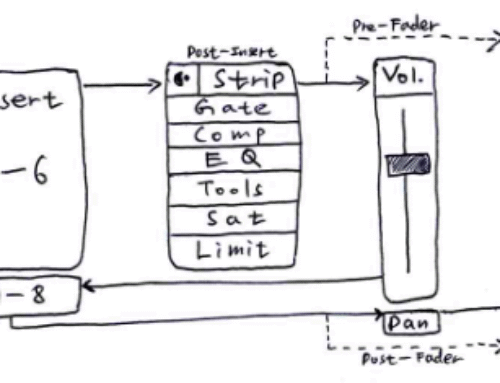| Recent Comments |
| Categories |
| Archives |
| Tags |
Recording and monitoring with Cubase 10.5 Pro and the Behringer X32.
Obsolete. I changed my monitoring setup
I had various configurations for recording and monitoring with Cubase and the X32 but now again changed the workflow to have more flexibility.
The basic setup is shown in the next figure:
Basically, I have configured one Cue in Cubase, which allows to monitor selected channels in Cubase on Channel 7 and 8 of the X32 mixer. In case of recording vocals, the Cue may for example have a basic mix (drum, bass, piano) but also the vocals it self which are routed to a monitoring bus. This monitoring busk is basically an Output bus (defined in Audio Connections) that is not mapped to any output (e.g., stereo out, master out in my configuration). In fact, this monitoring channel only goes through the Cue. Insert effects (e.g., reverb) can be used on the monitoring bus. Vocals can only be monitored when ‘monitoring’ is enabled on the ‘recording track’ (a Cubase Audio track).
The X32 maps channel 7/8 (i.e., the Cubase Cue) to Mix bus 9/10 which is mapped to XLR outputs 9/10, which go through the PX2000 patchbay (open connection; in my rack) directly to the HA4700 head phone amplifier that allows the connection of multiple head phones. The patchbay is only in between to allow me to use output 9/10 for other purposes than monitoring. X32 Channel 7/8 (Cue) is, thus, only audible through the head phones and not through my studio speakers. Note, that the full mix is still on the stereo and master output output mapped to Mix bus 3/4, which is connect to my monitor speakers. In this setup the (microphone) input channel is not mapped to any output on the X32. In stead it is routed to Cubase, which routes the input to the monitoring bus and the Cue back to the X32.
With the X32 (external) insert effects can be used on the input (microphone) channel. External effects can be added by using the Aux 5 out/in as an insert point. Aux 5 is connected to the patchbay, which allows to use the Lexicon MPX500 effect processor.
One advantage of the current setup in case of recording vocals or guitars is that the head phone amplifier and the MPX500 effect processor is next to the musician which allows him/her to adjust volume, amount of reverb, etc him/her self.
Image: screen shot of part of the Cubase mixer. Several mix busses (vocals, drums, etc) are shown (blue) but also the Stereo Out and Master Out (red) as well as the monitoring bus (right; red). Here only drums, bass, guitar, and the monitor bus are send to the Cue with different volumes.
Image: screen shot of Cubase. Here the configuration of the Cue is shown in Audio Connections. The Cue is mapped to channel 7/8. To the left there are several controls (e.g., overall volume) for the Cue.
Rack setup
In the rack below you see two patchbays (4 and 5 counting from below), the Lexicon MX200 and MPX500 effect processors (10 and 11). On top there is the HA4700 head phone amplifier.
Image: 19-inch rack
Details
- Cubase: add cue to all channels that should be monitored.
- ONLY for the channels that are routed to ‘stereo out’ and not for the channels that are routed to a group.
- Map ‘Cue’ to X32 channel 7/8 (in Audio Connections)
- X32: channel 7/8 should NOT be mapped to speaker output (check with Sends On Fader)
- X32: map channel 7/8 to MixBus 9/10
- XLR output of MixBus 9/10 will go to patch bay and then to headphone amplifier.
- X32: do not map channel 30 (microphone) to MixBus
- Cubase: make monitoring output bus.
- Not mapped to any output
- Add Cue
- Map the output of the Audio track on which is recorded to the ‘Monitoring’ channel
- Enable ‘monitoring’ on the Audio track on which is recorded.
- Optional: use effects on the insert channel of the monitoring track (however, see below)
- X32: use Insert (aux5) to add reverb from the Lexicon). Can be inserted via the patch bay
- X32: routing. CARD OUTPUTS 25-32 is mapped to P16 9-16. Map P16 9-16 to direct out 25-32 (all pre-Fdr+M). Only in this way ca can get the insert effect on the mic channel to the computer/Cubase. If this mapping is not done then the X32 input is passed to the computer prior to the whole effect chain (eq – dynamics – inserts, etc).









